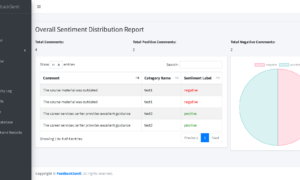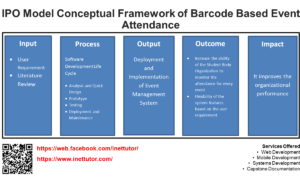Patient Information System Review of Related Literature
The following review of related literatures and studies will serve as the basis for the development of the Patient Information System for our client and will also serve as a guide for crafting the documents of this research study.
Review of Related Literature
Patient record systems as elaborated by Annals.org (1993), although an area of active research, are not in widespread use. In June 1992, 3% of Dutch general practitioners had introduced computer-based patient records. Of these, 70% had replaced the paper patient record with a computer-based record to retrieve and record clinical data during consultations. Possible reasons for the use of computerized patient record system include the nature of Dutch general practice and the early and active role of professional organizations in recognizing the potential of computerized patient record system. Professional organizations issued guidelines for information systems in general practice, evaluated available systems, and provided postgraduate training that prepares physicians to use the system. In addition, professional organizations successfully urged the government to reimburse general practitioners part of the expenses related to the introduction of computerized patient record system.

Patient record system as elaborated by Alan Bingham (2008) in his book entitled “Healthcare Financial Management” is still a relatively new concept; however, such systems offer a variety of benefits to physician practices. It can help improve the quality care provided, for example, by providing real- time patient status reports, test results as soon as they are available, and graph and flow sheets of test trends. They can help reduce by eliminating many manual functions and the supply and staff expenses associated with these functions.
William and Boren (2008) acknowledged that most European countries and the United States are increasingly adopting electronic medical record (EMR) technology to enhance health care outcome and quality. William and Boren posited that Nigeria lacks robust health care infrastructures and policies for implementation of information and communications technology (ICT). Complicated by challenges of epidemics and civil wars, African countries lack ICT in their health care systems. The authors asserted that historically, lack of human expertise and inadequate financial resources is a bane to robust to adoption of ICT in Sub-Saharan Africa.
Benefits of Hospital Information Systems Hospital Information Systems improve workflow and increase patients’ access to health care (Ouma & Herselman, 2008; Shekelle et al., 2006; Wallis 2007). Sisniega (2009) asserted that the applications of information and communication technologies facilitate ubiquitous and instantaneous communication between organizations and their stakeholders. ICT enable people and organizations to achieve seamless workflow and effective processes through improved interactions. Electronic health technologies enable effective networking by physicians, allow online review of patients’ treatment, and provide for accurate prescription of drugs. Radiology information systems enable the transmission of radiological images for evaluation in remote sites (Weimar, 2009). Electronic data interchange is part of the applications of a robust and integrated electronic health record system. The type of integrated system envisioned by President Bush’s administration is aimed at warehousing the health care information of all Americans in a national database by 2014 (Thielst, 2007). Electronic data interchange primarily is aimed at achieving seamless continuity of care, irrespective of patient migration from one clinician to another or from one city to another. A study on electronic medical records by Keenan et al. (2006) found improvement in daily work and enhanced patient care: (a) medication turn-around times fell from 5:28 hours to 1:51 hours; (b) radiology procedure completion times fell from 7:37 hours to 4:21 hours; and (c) lab results reporting times fell from 31:3 minutes to 23:4 minutes. In the same study, transcribing errors for orders declined, and length of hospital stay decreased. Other benefits of electronic medical records systems are possibility for online monitoring of vital signs, capability for multi-site review of patients’ records, and improved physicians’ collaboration in patient care. EMR facilitates easy access to medication administration records, sharing of consultation reports, and decreased transmit time of test results by reducing the time taken to deliver paper versions (Keenan et al., 2006).
Cohan (2005) expressed a contrary view that investment in information technology does not necessarily transcend to improvement in productivity. Cohan stressed that shortfall in productivity expectations have made industrial leaders more cautious in adopting information technology in their organizational processes. Presenting a balanced view, Farquharson (2009) asserted that adoption of information technology increases productivity but falls short of expectation in improvement of productivity considering the high capital investment required for implementation. Farquharson surmised that industry productivity paradox exists to some extent with implementation of ICT. Furukawa, Raghu, Spaulding, and Vinze (2006) argue that hospital information systems enhance quality of health care delivery and safety.
The LIS industry has accepted the challenge and developed innovative software solutions that include patient result verification, the recognition of critical values in addition to the immediate transfer of critical values to physicians for evaluation, and enhanced turnaround time (Harrison & McDowell, 2008). Interfacing software is available to merge the laboratory information operating systems with electronic health record (EHR) systems, enhancing the continuum of communication among providers. Stone, et al. (2005) and Harrison and McDowell anticipated the future of LIS and EHR will provide for increased patient safety, enhanced quality of care, and a leaner operating system resulting in efficient and productive processes.
According to Nanda (2006), the present situation of healthcare in developing countries like India are quite discouraging, as the physicians use a paper based system whereby they record patient information, diagnosis and treatments on a “Case Sheet”. Abdul (2008) mentions that each time a patient visits a hospital, a new case sheet is created, and this creates an excess of paperwork, repetition of examination done previously leading to over-consumption of work force and other resources. In India, the case sheet is an official and legal document written by healthcare staff about all the medical information of a patient. It includes past medical history, present complaints, results of examinations done, diagnosis and treatment and the condition of these medical records in public hospitals in quite disappointing. This situation is due to reluctant hospital administration or inefficient medical record staff and it is increasing constantly by the year.
Abdul (2008) indicates that one of the important issues in paper-based records are, all the clinical information is written in free style, and chances are high to miss or forget some important information, as this will lead to serious effect on patient’s treatment and care. The case sheet is a hard copy that can be accessed by one person at a time and needs physical transfer for other physicians to access. Retrieving a record will be a hard task given number of medical records present and missing a record won’t be a surprise in a huge pile of paper based medical records. Moreover, with time, information in paper records gets diminished of ageing paper and ink, even fire accidents or natural disasters can ruin the archive of paper records. Karim (2008) explains that all the above discussed issues can be over-come by implementing EMR/EPR systems, it can not only solve the problems but also improves the efficiency of healthcare by increasing accessibility, and needs less resources to maintain records. EPR system can be used as a resource of researchers, it will be a tool for disease surveillance, which can be used for public health initiatives and for practicing Evidence based medicine.
Bossen (2006) states that standardization term comprises EHR structure, content and the way of exchanging will assist and improve the connection between healthcare providers in dispersed sectors and share data between distributed EHRs that supports everyday medical work. The National Board of Health in Denmark developed a standard for EHRs called as BEHR, which was based on evaluated results of testing a prototype EHR.
Patient record systems as elaborated by Annals.org (1993), although an area of active research, are not in widespread use. In June 1992, 3% of Dutch general practitioners had introduced computer-based patient records. Of these, 70% had replaced the paper patient record with a computer-based record to retrieve and record clinical data during consultations. Possible reasons for the use of computerized patient record system include the nature of Dutch general practice and the early and active role of professional organizations in recognizing the potential of computerized patient record system. Professional organizations issued guidelines for information systems in general practice, evaluated available systems, and provided postgraduate training that prepares physicians to use the system. In addition, professional organizations successfully urged the government to reimburse general practitioners part of the expenses related to the
Patient record system as elaborated by Alan Bingham (2008) in his book entitled “Healthcare Financial Management” is still a relatively new concept; however, such systems offer a variety of benefits to physician practices. It can help improve the quality care provided, for example, by providing real- time patient status reports, test results as soon as they are available, and graph and flow sheets of test trends. They can help reduce by eliminating many manual functions and the supply and staff expenses associated with these functions. American Medical Informatics Association (1997) explained that patient record system is defined as a system that contains primary patient records by health care professionals while providing patient care services to review patient data or document with their own observations.
In 1991, the IOM published a report recommending the implementation of the CPR by 2001 to improve the care of patients and to reduce waste. The Computer-based Patient Record Institute (CPRI) stated, if providers continue with their current paper systems, they will lack the tools needed to manage the quality and costs of healthcare, the scientific basis for healthcare will continue to be undermined, and healthcare reform will be impeded. Therefore, administrators and other people involved in allocating resources and selecting CPR systems need to be educated about the benefits and complexities of CPR systems.
Ten years after the initial report, CPRs are still under review for cost justification. A by Lenhart, Honness, Covington, and Johnson found that only 55 of 329 family practice residency programs (17 percent) were currently using a CPR. Similarly, only 13 percent of HIMSS 2002 Leadership Survey respondents reported having a fully operational CPR system. Tang and Hammond stated that implementing an expansive, robust system is daunting, but the option of operating an integrated delivery system on paper is increasingly becoming a nonviable alternative.
Kaiser Permanente of Ohio saw these best practice guidelines compliance improvements after implementing a medical automated record system and adding
reminders at the point of care:
- Aspirin use in patients with coronary artery disease increased from 56 percent to 82 percent in 27 months, while lipid-lowering agents increased from 10 percent to 20 percent in 7 months .
- ACE inhibitor use in patients with congestive heart failure increased from 54 percent to 66 percent.
- Stratification (staging) for patients with diabetes mellitus and asthma increased to 76 percent in 26 months and 65 percent in 29 months respectively. In addition, referrals to podiatry for medium and high-risk diabetics
increased from 14 percent to 66 percent in 12 months.
- Percentage of hypertensive patients taking non-recommended medicationsdecreased from 16 percent to 12 percent in 12 months.
- Percentage of patients older than 64 years of age who were offered an influenza vaccination during a primary care visit increased from 56 percent to 69 percent in 36 months.
Mildon and Cohen and Tierney et alcited similar studies related to improved compliance with clinical guidelines. Third, CPR tools ensured each note was complete, helped standardize chart quality, and minimized errors. Charts were legible and organized, visits were documented consistent to the level of service provided, and signing was more convenient when providers were able to view and sign from any workstation. Fourth, patient education was simplified because providers didn’t need to worry about a copied supply of handouts. CPR products were used as tools for the providers to illustrate or explain procedures or conditions to patients, and handouts were printed directly from the system.
Mildon and Cohen reported that one practice reduced its staffing to 2.2 FTEs per physician after implementing a CPR system. This is 2.11 FTEs below the Medical Group Management Association’s calculated staffing ratio. Stammer cited that a chart pull costs $20 at Scott and White Memorial Hospital, Clinic, and Health Systems in Temple, Texas. Their electronic chart solution reduced electronic chart pulls to less than $1 apiece. In addition to savings in chart pulls, consider the costs associated with supporting paper-charting systems. When practices abandon paper, they abandon expenses that support paper such as filing systems and costs for paper supplies. Costs for a paper chart system are estimated at about three dollars per chart. In addition, practices can eventually reclaim the space used to store and file charts. CPRs also eliminated the labor and copying expenses associated with chart requests from outside of the healthcare delivery system.
REVIEW RELATED STUDY
According to Neame [1995:4-6] the benefits of an electronic medical record are numerous. Information is available from every computer that is connected to the database and entries made by multiple providers in different locations can be linked to create a single record for an individual. Data can be checked as it is entered to ensure adequacy and accuracy. The same data can be viewed in different ways and links to knowledge- based tools are also possible.
In terms of the health needs of the people, the province has one provincial hospital and a number of private hospitals and clinics. Most people, however, rely on the rural health units or barangay health centers for their health care needs. Municipal health centers usually have a medical doctor, a nurse, a health inspector, a medical technologist, a midwife, and volunteer health workers. In small barangays, a midwife is in charge of the barangay health station with the help of barangay health workers. In a devolved system, municipal health units are under the local government, while the barangay council oversees the barangay health stations. In some areas, barangay health workers receive salaries provided by the barangay council. The government clinics provide services free of charge although some clinics ask clients for a donation for the upkeep of the clinic. Traditional midwives called hilots living in the area also perform family planning activities such as delivering babies and treating women for infertility.
Majority of pregnant women in the provinces of Western Samar, Surigao del Sur and Sorsogon still prefer to give birth at home instead of delivering their babies in a lying-in clinic or private hospital in their area, according to a recent study sponsored by the Department of Health. The baseline survey, which was conducted from June 2007to March 2008, showed that up to 75 percent or three out of four babies in parts of the three provinces are delivered at home. Less than three percent of deliveries in the three provinces were in private hospitals or private clinics. Twenty-two percent of deliveries in Western Samar, 19 percent of 16 deliveries in Surigao del Sur and 38 percent of deliveries in Sorsogon were done in government hospitals.
The survey interviewed 1,200 women and 350 health care providers including doctors, midwives and traditional birth attendants in the three provinces. It was conducted by the UP Center for Economic Policy Research for the DOH Women’s Health and Safe Motherhood Project. The survey showed that traditional birth attendants or hilots attended to about a third of deliveries in Western Samar, 20percent of deliveries in Sorsogon and 43 percent of deliveries in Surigao del Sur. In Sorsogon, 20 percent of pregnant women were attended to by physicians compared to18 percent in Surigao del Sur and 15 percent in Western Samar. On the other hand, nurses attended to 18percent of pregnancies in Surigao del Sur, 11 percent in Sorsogon and nine percent in Western Samar.( Recidoro 2008)Corruption in the Philippines is undermining its delivery of health services,reducing its child immunization rate by 10 to 20 percent, and increasing the waiting time in public health clinics by 30 percent, a study says. The group ranked the Philippines as the ninth most corrupt country in the world last year — worse than in 2004 when it ranked 11th. Corruption in the Philippines’ health sector reduces the chances of children completing their vaccination by four times, the report says. “Corruption affects all health systems, but its effects are disproportionate upon the poor who cannot afford private-sector alternatives and for whom the fees charged represent a large proportion of their family budget.” According to the study, the Philippines is an ideal place to study the impact of corruption on service delivery, especially because it has devolved both political authority and administrative control of many health and education services to local government units. (Mencias 2006).
You may visit our Facebook page for more information, inquiries, and comments. Please subscribe also to our YouTube Channel to receive free capstone projects resources and computer programming tutorials.
Hire our team to do the project.


